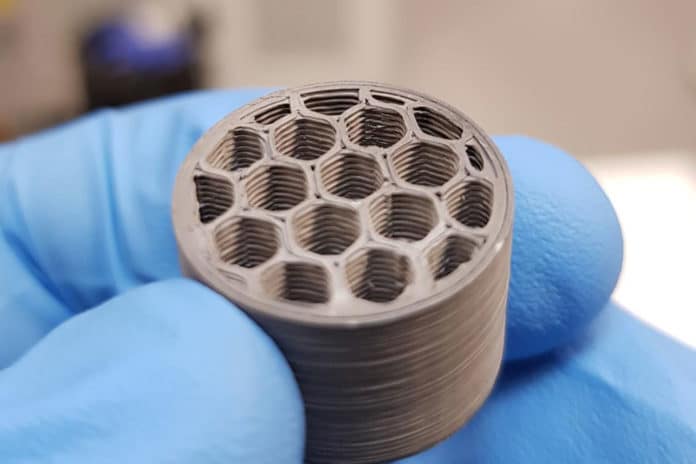Hydrazine is a commonly used aerospace propellant for low to medium-thrust applications. However, it is a suspected carcinogen and requires additional safety equipment and protocols, which drives up the fuel cost.
Hydrogen peroxide is a much less toxic alternative to hydrazine. It is largely non-toxic to humans and has typical household uses such as bleaching hair or cleaning wounds.
Generating thrust from hydrogen peroxide requires a catalyst. It may be a precious metal, like silver or platinum.
A University of Canterbury Engineering student- Simon Reid- is interested in the intersection of 3D printing and aerospace. Currently, he is working on a 3D-printed catalyst bed that allows more efficient use of concentrated hydrogen peroxide as a propellant for rockets requiring low to medium thrust.
Simon coated the surface of the ceramic catalyst with the catalyst for hydrogen peroxide to pass through.
Simon explains, “Bypassing liquid hydrogen peroxide over a catalyst bed speeds up the decomposition reaction. The reaction disassociates the molecule, turning it into water and oxygen. The breakup of the molecule produces a large amount of energy and heat. The heat vaporizes the water and results in a high-temperature gas – passing the hot gas through a nozzle provides thrust.”
Simon aims to maximize the generation of thrust from hydrogen peroxide. At the same time, he wants to limit the loss of catalyst from the bed and keep the components light.
In collaboration with Callaghan Innovation, Simon uses 3D printing to generate novel catalytic structures that have better properties, such as lower pressure drop, and use different catalytic materials to improve the performance of the thrusters.
Simon said, “The shape I’m using is called a gyroid. It’s a mathematical shape, more optimal for catalytic processes, and cannot be manufactured using traditional techniques.”
By using gyroid, Simon wants to overcome three things:
- Loss of catalyst
- Large pressure drop
- Maximizing thrust balanced against the concentration of hydrogen peroxide.
